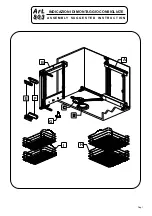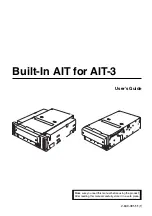
33
Maximum Concurrent Host LUN Connection (“Nexus” in SCSI)
The "Max Number of Concurrent Host-LUN Connection" menu option is used to set the
maximum number of concurrent host-LUN connections.
Maximum concurrent host LUN connection (nexus in SCSI) is the arrangement of the
controller internal resources for use with a number of the current host nexus.
For example, you can have four hosts (A, B, C, and D) and four host IDs/LUNs (IDs 0,
1, 2 and 3) in a configuration where:
Host A accesses ID 0 (one nexus).
Host B accesses ID 1 (one nexus).
Host C accesses ID 2 (one nexus).
Host D accesses ID 3 (one nexus).
These connections are all queued in the cache and are called four nexus.
If there is I/O in the cache with four different nexus, and another host I/O comes with a nexus
different than the four in the cache (for example, host A accesses ID 3), the controller
returns busy. This occurs with the concurrent active nexus; if the cache is cleared, it accepts
four different nexus again. Many I/O operations can be accessed via the same nexus.
Maximum Queued I/O Count
The "Maximum Queued I/O Count" menu option enables you to configure the maximum
number of I/O operations per host channel that can be accepted from servers. The
predefined range is from 1 to 1024 I/O operations per host channel, or you can choose the
"Auto" (automatically configured) setting. The default value is
256 I/O operations.
The appropriate "Maximum Queued I/O Count" setting depends on how many I/O
operations the attached servers are performing. This can vary according to the amount of
host memory present as well as the number of drives and their size. But usually, optimum
performance results from using the "Auto" or "256" settings.
For more information, please refer to the Firmware Manual that came with your system.
Fibre-Host Connections
WARNING
All Fibre cables are sensitive and must be handled with care. To avoid interference,
the cable routing path must be carefully planned and the cables must not be bent.
The Fibre Channel standard allows optical connections. Optical cables can be used over
longer distances and have been shown to be more reliable. Due to the demands of high
transfer rates, optical cables are preferred for 16/ 8/ 4Gbps fiber connectivity. Optical cables
are not susceptible to EMI.
The Fibre host ports connect to Fibre Channel host adapters (HBA) that feature SFP
interface that supports full-duplex transfer and come with a PCI-E interface. Please contact
your vendor for the latest certified items.
















































